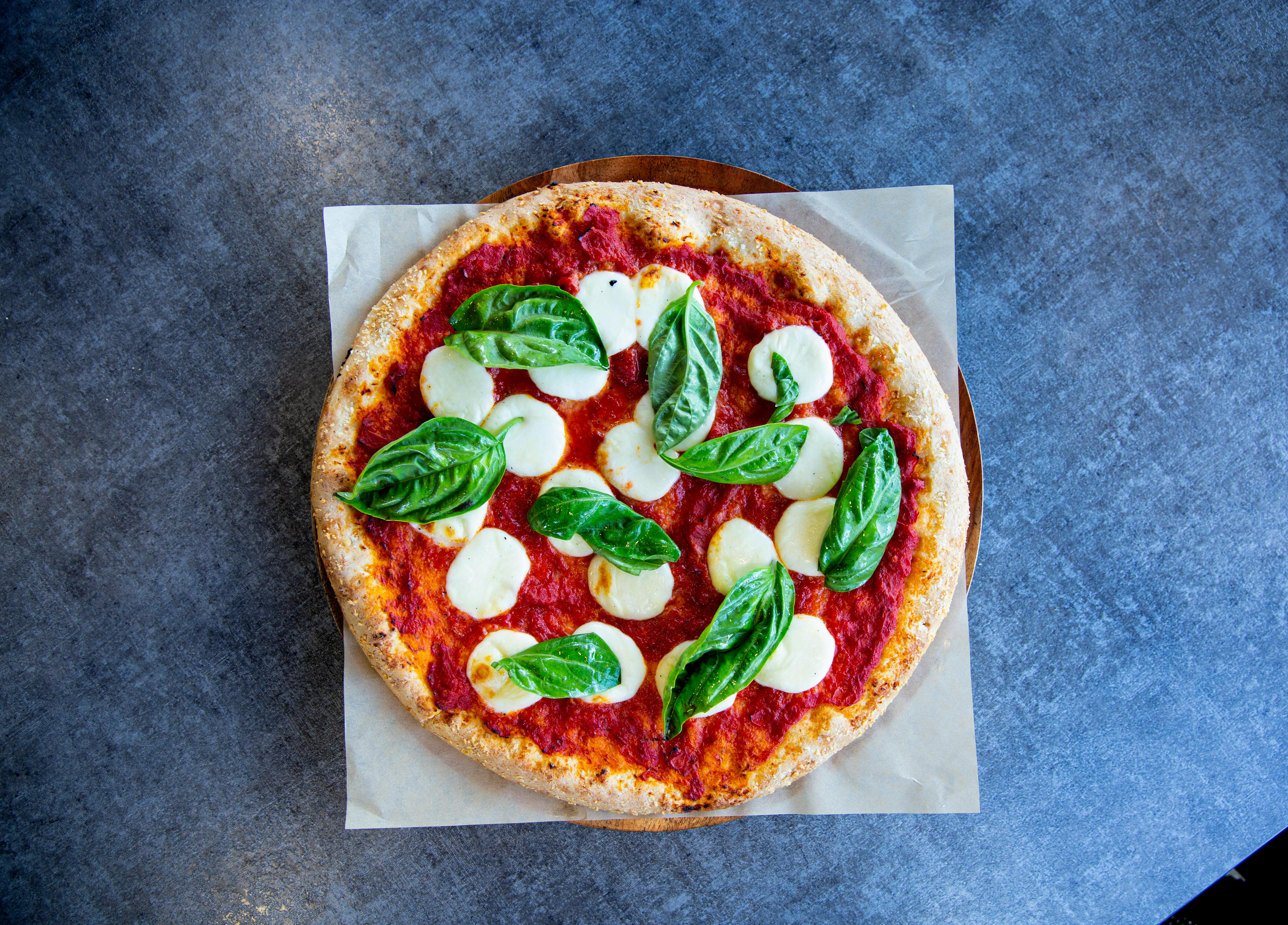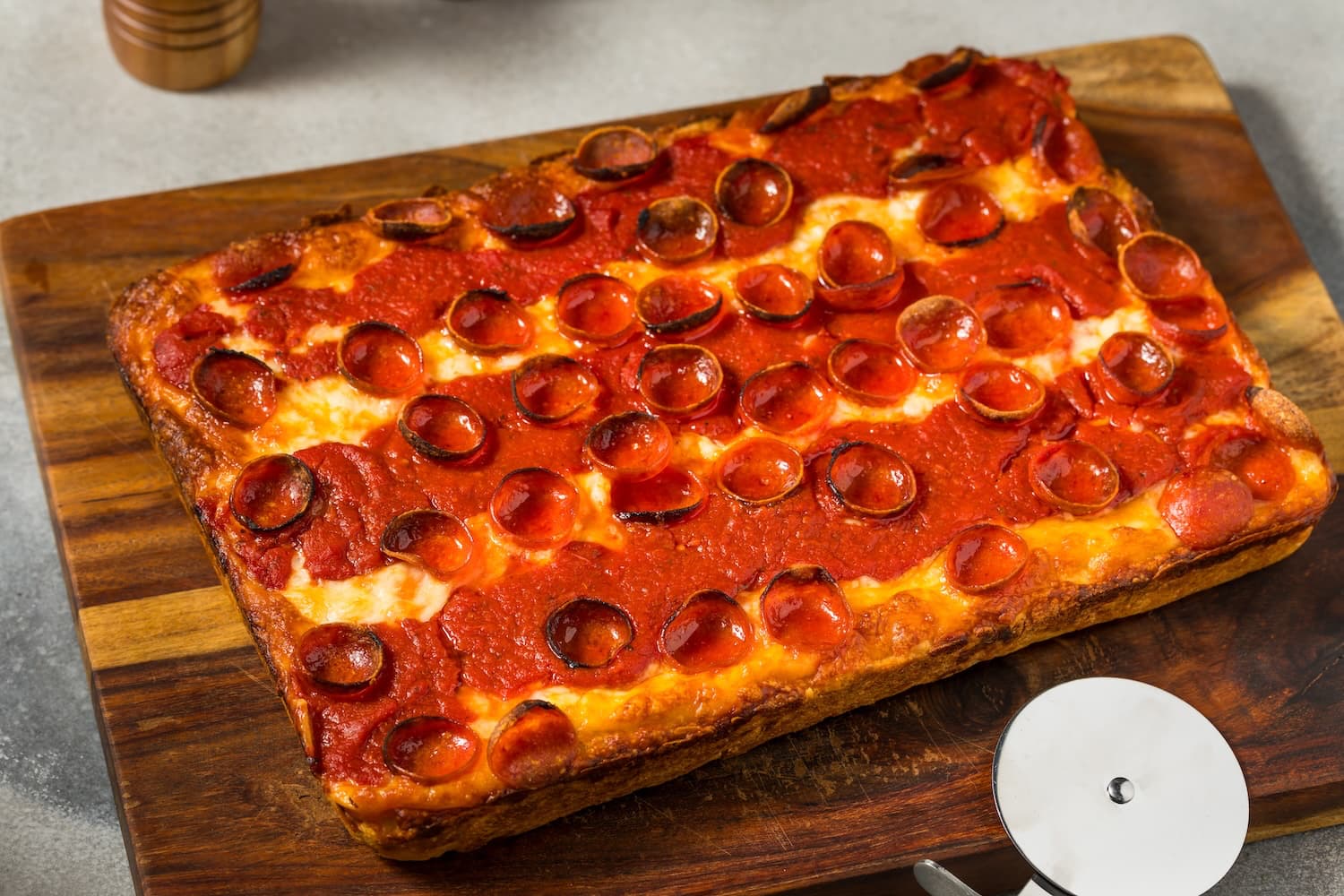Sicilian Pizza: The Heart and Soul of Sicilian Cuisine
Sicilian pizza, known as "Sfincione" in its most traditional form, is more than just a regional variation—it's a culinary masterpiece that embodies the rich history, culture, and flavors of Sicily itself. Unlike its thin-crusted cousins from Naples and Rome, Sicilian pizza features a thick, fluffy, focaccia-like base that serves as a canvas for the island's abundant and flavorful ingredients.
The story of Sicilian pizza begins in the heart of Palermo, where it emerged as a street food for the working class in the early 19th century. Originally sold by street vendors who carried large wooden boards on their heads, sfincione was designed to be hearty, filling, and affordable— a complete meal that could sustain workers through long days. Today, it has evolved into one of the most beloved and distinctive pizza styles, celebrated for its unique texture, rich flavors, and deep connection to Sicilian culinary traditions.
The Anatomy of Authentic Sicilian Pizza
Understanding what makes Sicilian pizza special requires an appreciation of its unique characteristics and the techniques that create them:
- The Dough: Sicilian pizza dough is a marvel of baking science, using high hydration (70-75% water content) to create a light, airy texture that's more like bread than traditional pizza crust. The dough is mixed with olive oil, which contributes to both flavor and texture, creating a rich, tender crumb.
- Fermentation: Long, slow fermentation is crucial for authentic Sicilian pizza. The dough typically ferments for 12-24 hours, allowing complex flavors to develop and creating the characteristic airy texture. This extended fermentation also makes the dough more digestible by breaking down starches and gluten. Shape and Size: Traditional Sicilian pizza is rectangular, typically baked in large sheet pans or "lids" that can be up to 18x24 inches. This shape allows for even cooking and creates the perfect ratio of crispy edges to soft center.
- Cooking Method: Sicilian pizza is baked in oiled pans at moderate temperatures (450-500°F/230-260°C) for longer periods than thin-crust pizzas. This slow baking creates a crispy, golden bottom while maintaining the soft, fluffy interior that defines the style.
Traditional Toppings: The Flavors of Sicily
Authentic Sicilian pizza features toppings that reflect the island's rich culinary heritage and abundant local ingredients:
- The Sauce: Sicilian pizza sauce is rich and complex, made with San Marzano tomatoes, onions, anchovies, capers, and herbs like oregano and basil. The sauce is cooked slowly to develop deep, concentrated flavors that complement the thick crust without overwhelming it.
- Cheese Selection: Traditional sfincione uses grated pecorino or caciocavallo cheese, which provides sharp, salty flavor without the excessive moisture that could make the thick crust soggy. Some modern variations incorporate mozzarella for additional creaminess.
- Breadcrumb Topping: One of the most distinctive features of traditional sfincione is the breadcrumb topping, which is mixed with olive oil, herbs, and sometimes grated cheese. This creates a crispy, flavorful crust that adds texture and helps absorb excess moisture from the sauce.
- Anchovies and Capers: These salty, briny ingredients are essential to authentic Sicilian pizza, providing the characteristic umami flavor that defines the style. They're typically scattered over the top of the pizza before baking.
The Evolution of Sicilian Pizza: From Street Food to Artisan Delicacy
Sicilian pizza has evolved significantly from its humble street food origins while maintaining its essential character:
- Traditional Sfincione: The original street food version, topped with tomatoes, onions, anchovies, and breadcrumbs. This version is still found in traditional bakeries and street food stalls throughout Sicily.
- Modern Variations: Contemporary Sicilian pizza has embraced new ingredients and techniques while maintaining the thick crust and rectangular shape. Popular modern toppings include fresh mozzarella, prosciutto, artichokes, and local Sicilian specialties like eggplant and ricotta.
- American Sicilian: In the United States, Sicilian pizza has been adapted to local tastes, often featuring more cheese and a wider variety of toppings while maintaining the thick, rectangular format.
Mastering Sicilian Pizza: Techniques and Tips
Creating authentic Sicilian pizza requires understanding both the science and art of thick-crust pizza making:
- Dough Development: The high hydration dough requires careful handling. Use the stretch and fold technique during bulk fermentation to develop gluten without overworking the dough. The dough should be sticky but manageable.
- Pan Preparation: Generously oil your baking pan with olive oil, ensuring the bottom and sides are well coated. This creates the characteristic crispy bottom and prevents sticking.
- Shaping Technique: Gently stretch the dough to fit the pan, being careful not to deflate the air bubbles that are essential for the light texture. Let the dough rest in the pan for 30-60 minutes before adding toppings.
- Topping Application: Apply sauce sparingly to prevent the thick crust from becoming soggy. Layer toppings in the correct order: sauce first, then cheese, then additional toppings, and finally breadcrumbs if using.
The Sicilian Pizza Experience: Beyond the Recipe
Eating Sicilian pizza is about more than just the food—it's about experiencing a piece of Sicilian culture and tradition:
- Social Dining: Sicilian pizza is meant to be shared, cut into large squares and served family-style. This communal aspect reflects the importance of family and community in Sicilian culture.
- Seasonal Ingredients: Traditional Sicilian pizza celebrates seasonal ingredients, with different variations appearing throughout the year based on what's fresh and available locally.
- Wine Pairing: Sicilian pizza pairs beautifully with local Sicilian wines, particularly Nero d'Avola or Frappato, which complement the rich, savory flavors of the pizza.
Regional Variations: The Diversity of Sicilian Pizza
While Palermo is the birthplace of sfincione, different regions of Sicily have developed their own variations:
- Palermo Style: The classic sfincione with tomato sauce, onions, anchovies, and breadcrumb topping.
- Catania Style: Features a thinner crust and often includes local ingredients like ricotta and eggplant.
- Ragusa Style:
The Art of Sicilian Pizza: A Culinary Journey
Making authentic Sicilian pizza is a journey that connects you to centuries of Sicilian culinary tradition. It's about understanding the balance between the thick, fluffy crust and the rich, flavorful toppings, about respecting the techniques that have been passed down through generations, and about celebrating the abundance and diversity of Sicilian ingredients.
Whether you're making traditional sfincione with anchovies and breadcrumbs or experimenting with modern variations, the key is to honor the spirit of Sicilian pizza: hearty, flavorful, and made with love and attention to detail. The result will be a pizza that's not just delicious, but a true celebration of Sicilian culture and culinary excellence.




